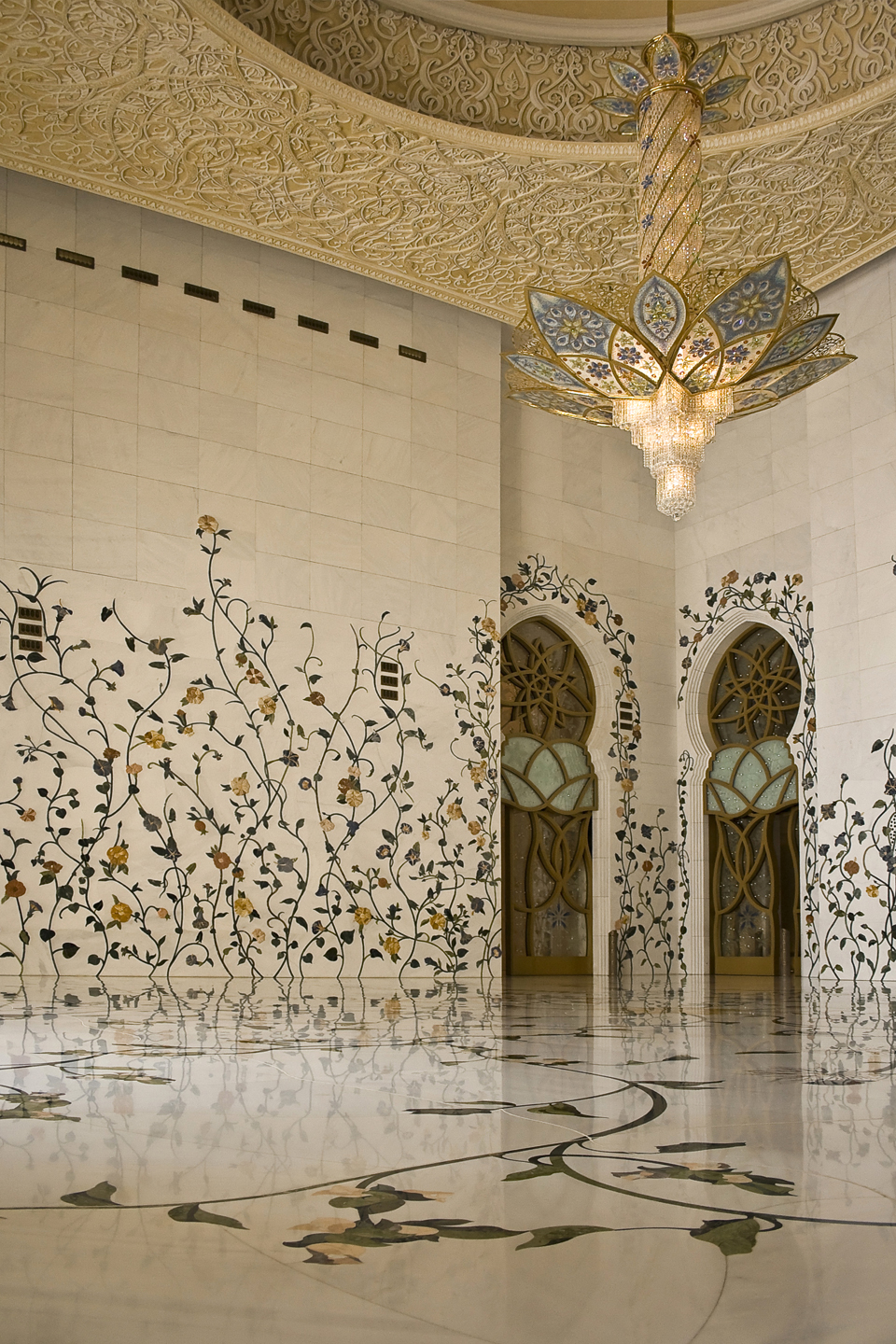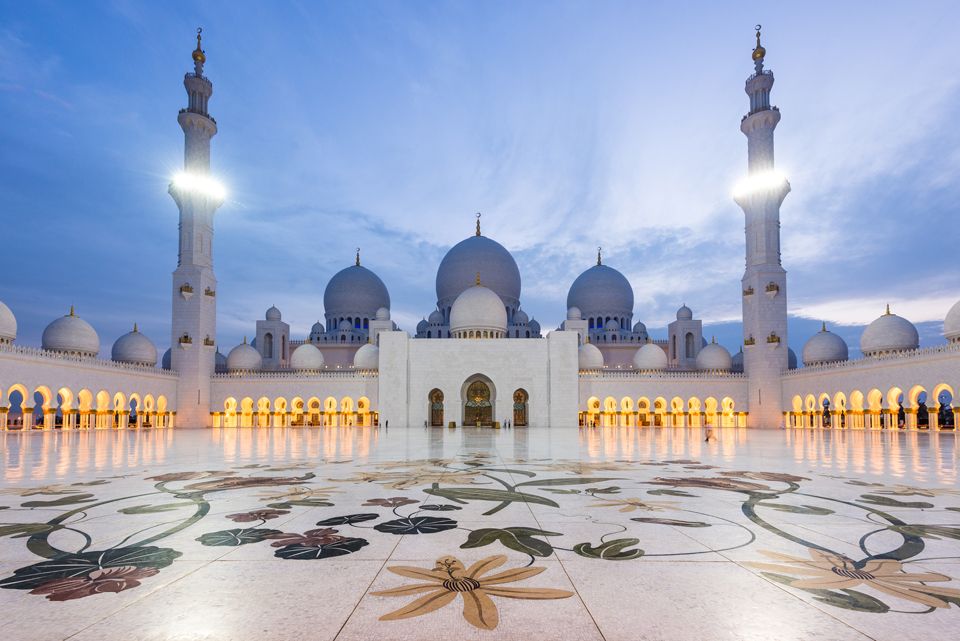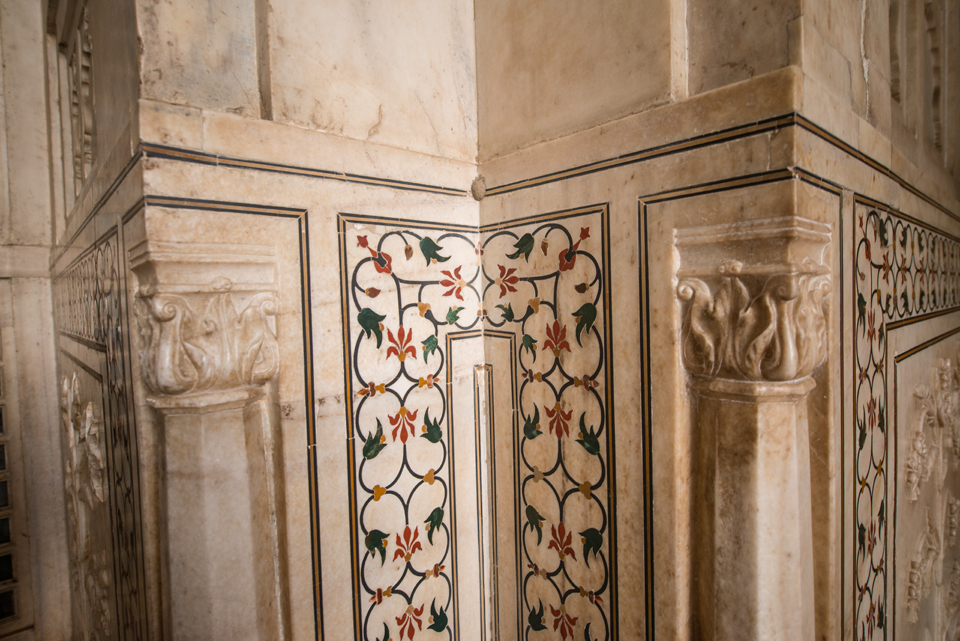Glittering around the world are a handful of buildings decorated with gems.
Sparkling like stars in the night sky, these architectural marvels are ornamented with mother of pearl, abalone shell, amethyst, lapis lazuli, red agate, and more . Such stones are often reserved for jewelry, so to see hundreds of them in one place is an awe-inspiring experience.
Join us, as we take a tour around the world to learn about these bejeweled beauties. We promise they’ll be quite a sight to behold.
The Taj Mahal – Agra, India
Built from 1632 to 1648, the Taj Mahal is the mausoleum Shah Jahan erected to honor his beloved wife, Mumtaz Mahal. Famed for its symmetrical beauty, it is also a bejeweled masterpiece.
The Taj Mahal’s interior is decorated with lapis lazuli, jade, carnelian, jasper, and agate. These gem materials were used to create the vines, flowers, and interlacing geometric patterns that adorn the walls.
To make these complex designs, the Taj Mahal’s craftsman used pietra dura (Italian for “hard stone”), a technique where gems of different colors were cut and then reassembled puzzle-like in the marble. A number of these patterns run uninterrupted across several stone blocks – an extremely difficult accomplishment that required the skills of exceptional craftsmen.
The Malachite Room at the Hermitage – St. Petersburg, Russia
Malachite was so coveted that a Russian newspaper in the 19th century wrote: “To afford having a big piece of wrought malachite is synonymous to owning diamonds.” Now imagine a room with malachite columns and pilasters, malachite vases, and a malachite fireplace surround.
This dream in rich green is the Malachite Room at the Hermitage Museum. Once the official drawing-room of Empress Alexandra Fedorovna (1872 – 1918), it is now open to all. So much malachite in one room is unprecedented.

The Malachite Room is a study in aristocratic elegance. Notice how malachite brings splashes of color to the room.
The Sheikh Zayed Mosque (Grand Mosque) – Abu Dhabi, United Arab Emirates
At the edge of the Persian Gulf, rising over the desert sands, are the white domes and minarets of the Sheikh Zayed Mosque, often referred to as the Grand Mosque, of Abu Dhabi. This monumental building holds 40,000 worshippers, has 82 domes, and stretches the length of five football fields. Started in April 1997, it was completed in September 2002.
Some $400 million was spent to erect this jeweled masterpiece. Mother of pearl inlays ornament the 96 columns in the main prayer hall. A staggering 20,000 marble panels sparkle with inlays of abalone shell, amethyst, lapis lazuli, mother of pearl, and red agate.

Bejeweled decorations are not confined to floors – they climb walls. Floral motifs link the mosque closely with nature.
The exterior courtyard is also bejeweled. It has 1048 columns that are adorned with lapis lazuli, red agate, amethyst, moss agate, jasper, and other gem materials. Some 28 different kinds of marble were used in the mosque.







